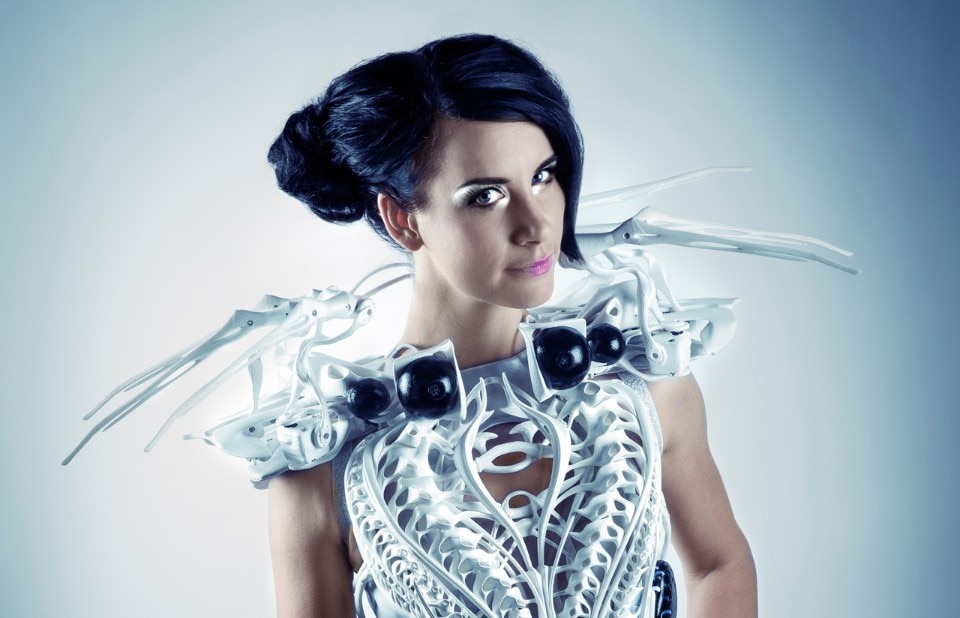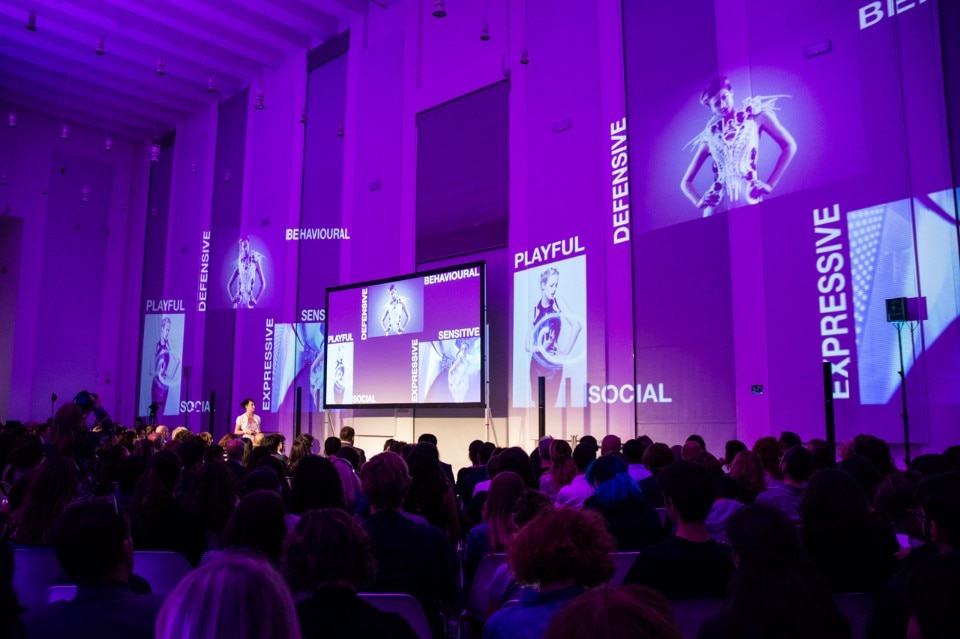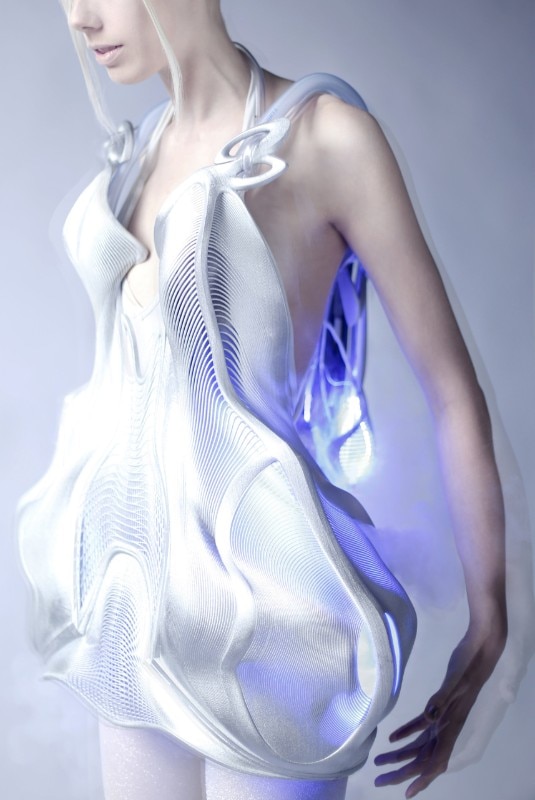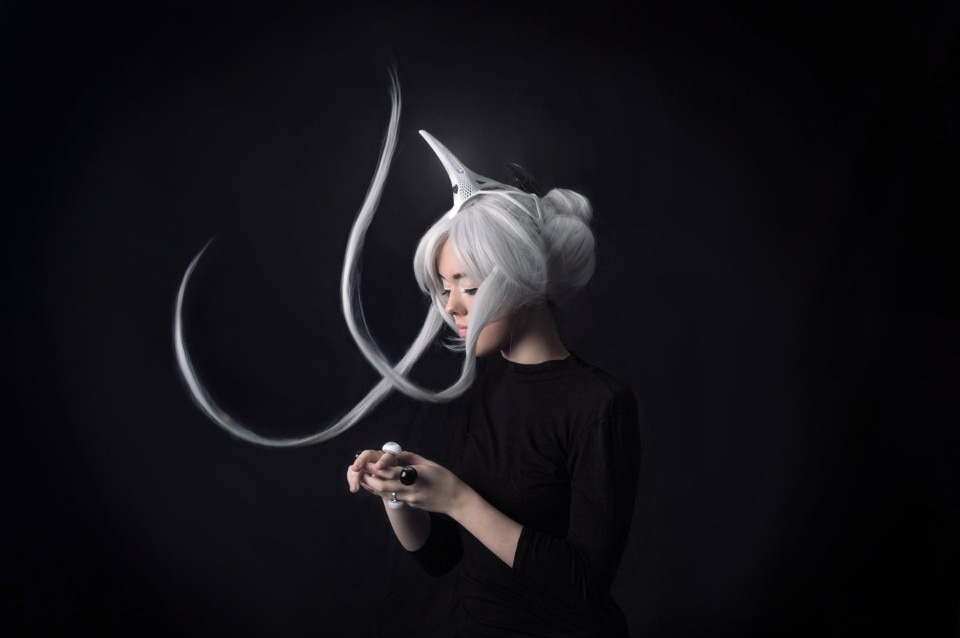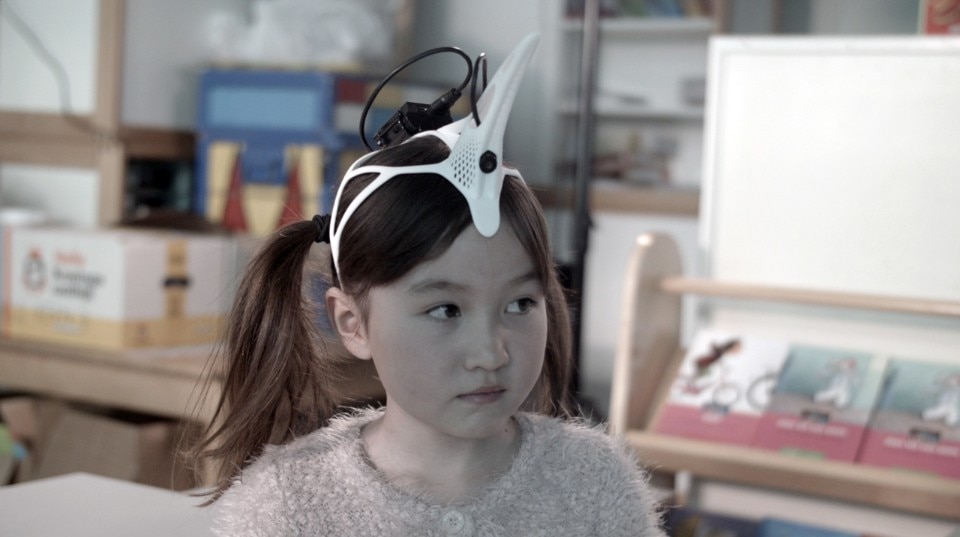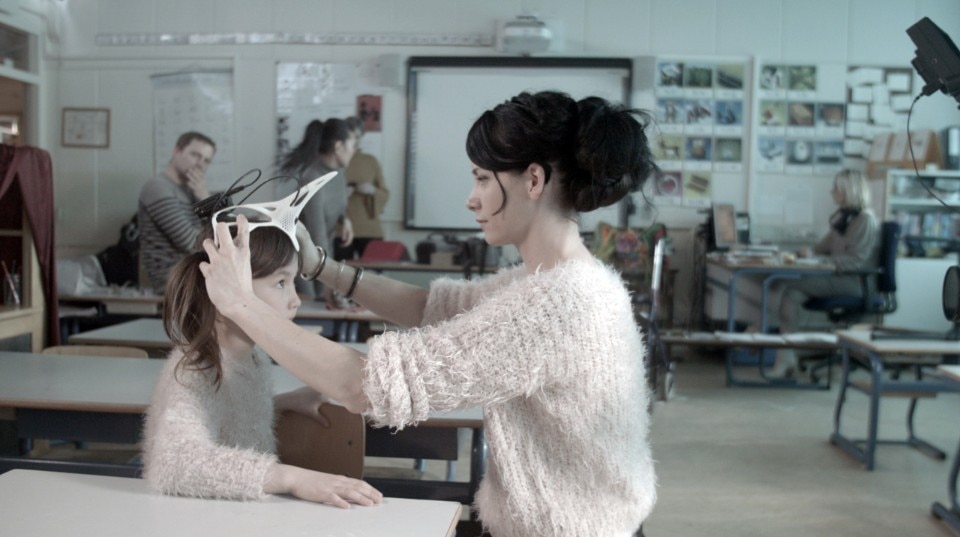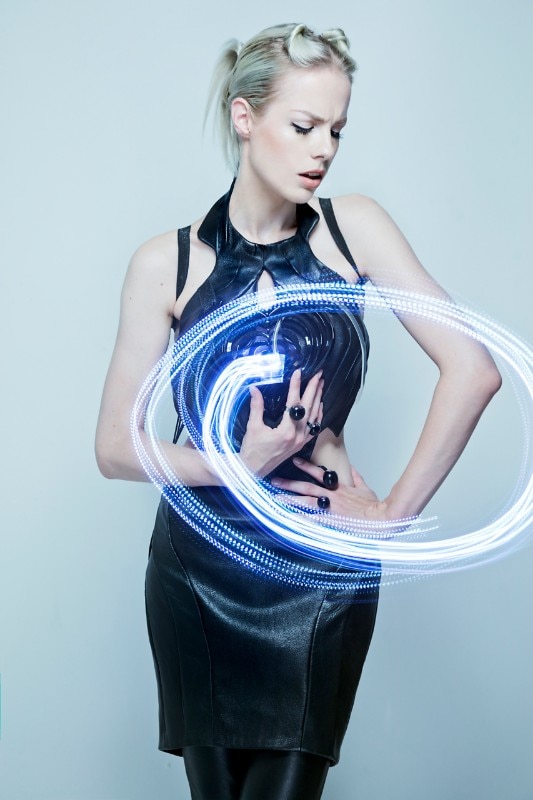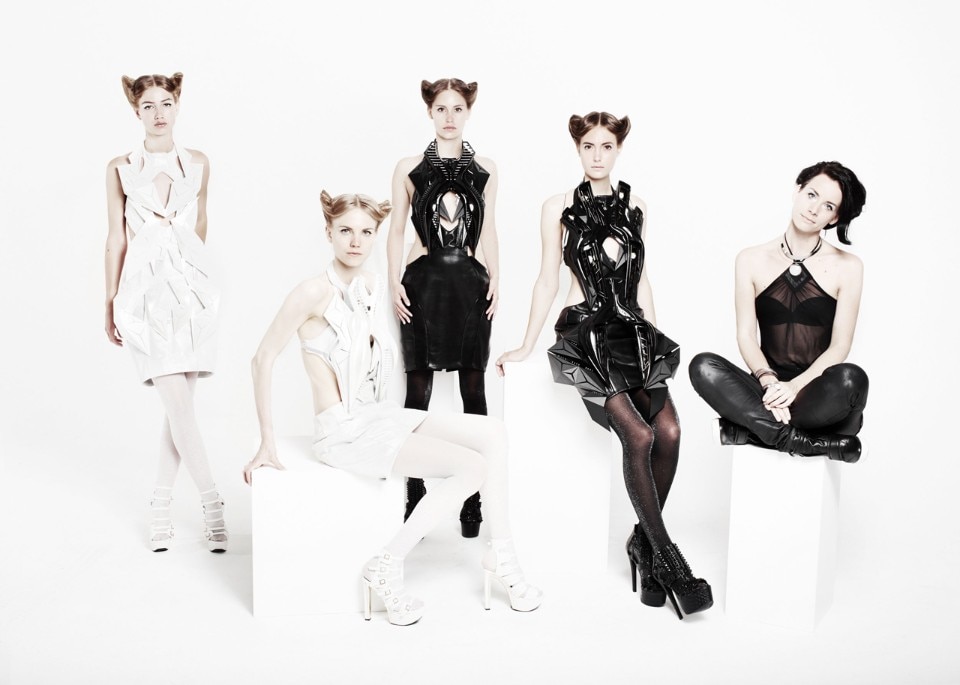You think you’re going to meet a fashion designer looking for special effects with which to amaze the audience at catwalk shows, curious about technology as an instrument to making her creations totally unique in the world of fashion but perhaps excessively fanciful. Instead the Dutch engineer and fashion designer Anouk Wipprecht, guest for the last few days at “Meet the Media guru” in Milan and famed for her robotic garments, opens her computer with a decisive gesture and shows you an image that illustrates how Arduino works, an all-Italian chip design that enables simple programming for various kinds of objects. Based on open source software that can be used freely, Arduino hardware lies at the origin of the maker movement, home builders of all kinds of devices, from 3D printers to drones. This is where Anouk, 32, started, with a desire to try and build something new, creating an unpredictable intertwining of advanced hardware and high fashion. This led to the emergence of projects such as her spider dress, that reacts to people coming near by moving robotic legs similar to those of a spider, or the smokedress, that under the same conditions gives off smoke. More recently is the cocktail dress, that serves drinks automatically thanks to a system of tubes and was commissioned by the Cirque du Soleil for their venues in Las Vegas and Ibiza. Her garments – 37 in all – are mainly produced using 3D printers. “Creativity in fashion shouldn’t stop at aesthetics – she explains – but can go much further and be combined with technology”.
Stefania Garassini: Can you tell us more about what these combinations might be?
Anouk Wipprecht: I think that the fashion industry and technology have to communicate much more between each other. What I try and do is unite the design of sensors adapted to the human body and the expressive aspect of fashion. I want to reinforce this side with the help of digital technology. I am interested in exploring how technology can help us to manage our relationship with the space that surrounds us. I think we can look at it in terms of four main areas: intimacy, personal, social and public. I often take inspiration from the instinctive reactions of animals, for example I was inspired by the behaviour of an octopus under threat that releases its own liquid to come up with the Smoke Dress, where smoke expresses in a theatrical way the unease that you can feel when people come too close. My clothes are updated, just like software. There is no definitive version but they are continuously improved, proceeding in a different way compared to traditional fashion designers.
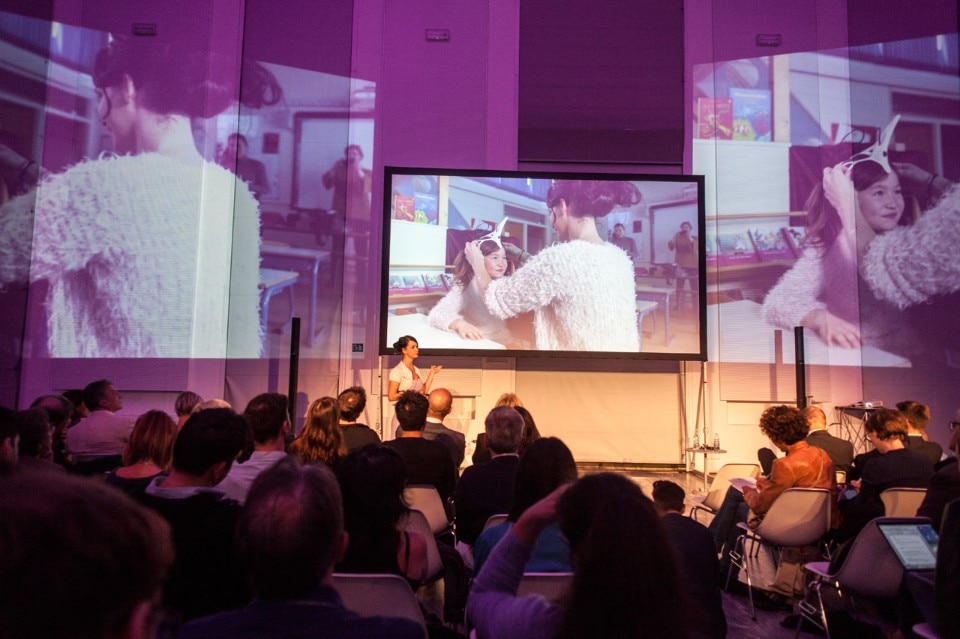
Stefania Garassini: You also take inspiration from the world of technology, in particular free software, in the way you consider your creations. Are the clothes also open-source?
Anouk Wipprecht: I make my ideas available on the internet. The technical characteristics of my garments can be consulted by anyone who wants to try and make them. A version of the Spider Dress, for example, was created made completely out of Lego. There are projects that I decide not to take forward but that may be interesting for the community: so all the details are available on the internet. I am not interested in patents, I’m interested in collaboration and the exchange of ideas. It is my way of expressing my gratitude towards a community – the one linked to Arduino – that was decisive in my development.
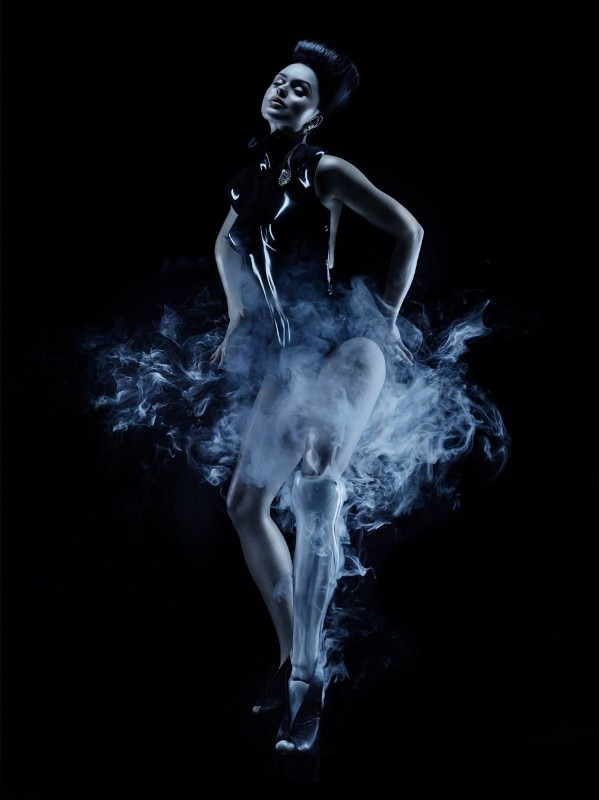
Stefania Garassini: In what other areas can the contribution of technology linked so closely to the body be important?
Anouk Wipprecht: I have worked with pop artist Viktoria Modesta, who has had part of her left leg amputated. We worked on the idea of making prosthetics that were to show off rather than hide or mimic reality. So I created a device for her inspired by the Smoke Dress: when the leg is jumped on, smoke comes out. In her performances Viktoria shows how technology can truly change the relationship we have with disability, a sphere that I am very interested in. The work of a company such as Open Bionics, that creates entertaining, low-cost prosthetics with a fun design, is going in this direction. Another area I am working in is the relationship between children and technology. In particular I made a head device to monitor the activity of children aged between 8 and 12 with ADHD. It is a kind of horn (the project is called Agent Unicorn) with a camera and sensors that detect brain activity. When the level of attention increases the camera takes a picture of what the child is looking it, in such a way as to make them aware of how their attention is moving. I can’t use it in a therapeutic way but I have tried it out as a device that children enjoy using because it is fun. What is more – something I didn’t imagine – the younger ones are very interested in seeing data about themselves, to test themselves. I would be happy if a device of this kind was able to at least partly substitute the use of pharmaceutical drugs. I will be launching it onto the market next spring.
Stefania Garassini: Going back to the clothing collection, are you planning to market your garments? Is it possible to buy one?
Anouk Wipprecht: My creations have the purpose of activating a dialogue between worlds that otherwise would remain distant from one another. They are case studies in which I try out technology and verify the solutions that can best function to achieve a certain effect, like a certain form of interaction. I work with IT companies such as Intel (where one of the five existing examples of the Spider Dress is held) and with luxury brands like Swarowski, a company for which I made jewellery connected to the heartbeat. In reality my clothes can already be produced on a large scale now, and the instructions are continuously being downloaded from the website for printing the models at home.
© all rights reserved

